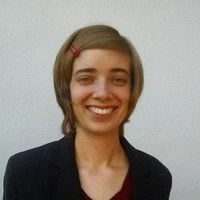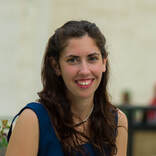By Lauren KoenigWhat does folding paper and designing a space rocket have in common? Quite a lot, according to Allison Redderson-Lear, Staff Engineer at Saratech. “Origami became one of the vectors that drew me to engineering,” says Allison. “Not only is it something that combines art and geometry, but lots of things can fold, not just paper — solar panels on satellites, medical devices, and even proteins.” The mechanical engineering field offers some of the most diverse and interdisciplinary career opportunities in STEM. Allison’s job as an engineer is no exception, allowing her to dig into a variety of projects every day where she creates, tests, and analyzes systems used in aerospace. “That’s something I enjoy about working at an engineering services company like Saratech—every day is different,” says Allison. “Over the course of a single day, I might look over results from the analysis I kicked off the night before, write a short program in C# or Visual Basic for myself or a customer, or create a new part or engineering drawing.” One of her favorite projects, for instance, was an aircraft control surface analysis. This work involved conducting stress analysis on the structure itself, along with streamlining her workflow through automation. Allison’s fascinating with engineering stemmed from early interests in math and science, as well as music, painting, and drawing. While she considered a career as a professional musician, her physics and calculus classes, along with the former engineers that taught those classes, inspired her to ultimately pursue engineering instead. “The ability to understand and define the world both conceptually and mathematically attracted me to physics, and I was drawn to the inherent creativity involved in engineering,” Allison says. She pursued those interests at the University of California, Irvine, where she completed her bachelor’s degree in mechanical engineering and became hooked on seeing a design through from start to finish. “The most rewarding part about my job is getting it right,” says Allison. “Knowing the answer, knowing how I got there, why my assumptions or factors of safety are appropriate, knowing it’s going to work, and then going out and nailing the test flight or software beta/release. Obviously, this can’t happen on every project; life is full of uncertainties, things we can’t know, and human errors. Either way, the satisfaction of seeing something you’ve been working on for weeks or months or even years finally take off (sometimes literally) is huge.” Other challenges facing those in the field, however, are unfortunately gender specific. While some universities are making strides to improve rates of diversity and inclusion in male-dominated fields like mechanical engineering, there is still an ongoing movement to increase the number of bachelor’s degrees and retention of women in engineering at the professional level. Allison’s experience has not been entirely immune to those biases. “When I did more customer support, some customers would mistake me for a secretary or other non-technical person, which never happened to my male colleagues. Also, overcoming social conditioning (speaking up in meetings, admitting when I don’t know something) has been difficult at times, but a supportive work environment has certainly helped,” she says. Finding good mentors and joining a network of other women are some of the ways that women can continue to fight sex-biases in STEM. Allison cites Simone Giertz, Swedish inventor, maker, and robotics enthusiast, as one of her role models, due to Simone’s enthusiasm and creativity in her work. “She portrays engineering as something accessible and fun, and I hope she inspires others to pursue careers in STEM. When asked to name some of the most important skills required to be a mechanical engineer, Allison pinpoints critical thinking as key: “The ability to evaluate your own assumptions and ideas relatively objectively is very important when it comes to engineering. Picking apart your own ideas allows you to improve them and better support them when presenting to others.” Critical and analytical thinking are also especially useful when adapting to changes in technology that affect the future of mechanical engineering. Allison is especially excited about how automation and improved simulation, like virtual reality, will allow the field to progress, in the same way that 3D modelling and CAD programs have already drastically changed the landscape of engineering design and drawing. For students looking to pursue a career in mechanical engineering, Allison suggests one of the first steps is learning to code. “Coding is really easy to pick up, and very useful throughout your career. If you have downtime between classes, an online coding class (many of which are free, and/or have in-browser interpreters so you don’t need to install or download anything) is a great way to spend that time. It doesn’t really matter what language you pick, they have the same building blocks. Even better, if you have the opportunity to learn to program within an existing application, such as Microsoft Office or any CAD product, do it!” When all of that hard work pays off in a job interview or a chat with a recruiter at a career fair, Allison strongly recommends researching the company beforehand and thinking about why it’s a good fit. “The obvious answer is “because they’re an engineering company, and I’m an engineer,” but if you show you’ve done your homework and have an idea of what they do and how that matches your skills, experience, or interests, you will be a stronger candidate.”
0 Comments
Your comment will be posted after it is approved.
Leave a Reply. |
Archives
July 2022
CategoriesAll Amy Massack BiWeekly Roundup Danae Dodge Gabrielle-Ann Torre Indulekha Karunakaran Jeesoo Sohn Lauren Koenig Lidiya Angelova Melissa Bendayan Microsoft Molly Connell Nektaria Riso Nicole Hellessey Physics Poornima Peiris Robbin Koenig Sadaf Atarod Sarah Smith Shreya Challa Vijendra Agarwal Women In STEM Yolanda Lannquist |
The Network for Pre-Professional Women in Science and Engineering
The Scientista Foundation is a registered 501(c)(3) -- Donate!



 RSS Feed
RSS Feed